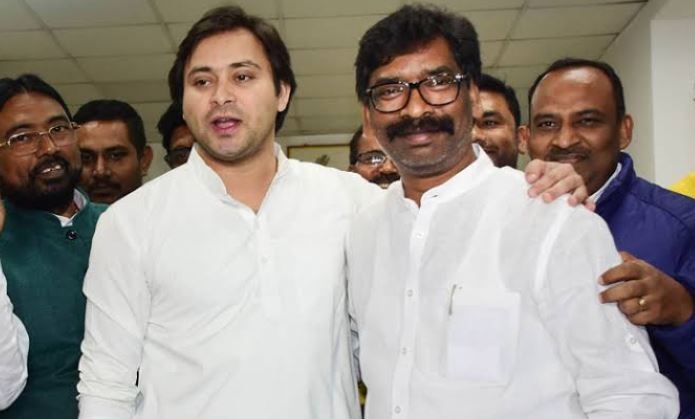As the picture in Jharkhand becomes clear, it is evident that BJP is set to lose the state. At the time of writing the article, the JMM-Congress-RJD alliance was leading on 48 seats in the assembly of 81, while BJP was leading on 23 seats. In all probability, it looks like Hemant Soren, the CM face of the alliance, will be the chief minister of the state for next five years.
It must be noted that the alliance turned the election into tribal vs non-tribal and to polarize it, JMM leaders like Hemant Soren had resorted to same old tribal plank. In various rallies, the JMM leader said that the BJP government at centre and Ragubar Das government in the state has cheated the tribal population.
In this assembly election, JMM contested on 43 seats while the Congress and the RJD fought on 31, and all the parties resorted to ‘quota politics’ to appease the voters. JMM has promised 28 per cent reservation to Scheduled Tribes, 27 per cent to Other Backward Classes and 12 per cent to Scheduled Castes, as per the party manifesto.
The BJP led NDA government, which came to power in the late 1990s at centre, decided to separate the region of Jharkhand in 2000 and thus a new state was born in the Union of India. However, since then, the state of Jharkhand gained the image of a tribal state; just like Haryana is considered a Jat state and Maharashtra a Maratha state, Jharkhand is tribal state in popular perception. But, demographically, only 26.3 per cent of the population of the state is tribal, but over a third (29 of 81) of the seats are reserved for the tribals.
The tribal vs non-tribal politics has ruined the development of the state in the last decade. The state has been governed by 6 chief ministers since 2000s and five of them are tribal. For the first time in 2014, BJP came to power in the state with full majority, winning 43 out of 81 seats, and the state got its first non-tribal Chief Minister in the name of Raghubar Das.
The last five years under Raghubar Das went very well with the tribal as well as non-tribal population. The development-oriented policies of Das benefitted the poor people of the state irrespective of their ethnic identities.
Read more: How PM Modi and Raghubar Das changed the face of Maoist hit areas in Jharkhand
However, the ethnic and identity politics trumped the developed oriented politics, and BJP suffered huge backlash from the tribal population. In the southern Jharkhand, the region dominated by tribal population, the JMM-Congress-RJD has above 70 percent strike rate.
BJP has performed excellently in Jharkhand since the inception of the state. The party won 8, 12, 12 seats in 2009, 2014, and 2019 general elections respectively. The party also performed well in legislative elections and won 30, 20, 43 seats in 2005, 2009, and 2014 assembly elections respectively.
In the 2019 assembly election, although BJP is set to become the single largest party, it will lose the government. In the ongoing calendar year, this is the second state after Maharashtra where BJP has lost a state where it had run the government for the last five years.
